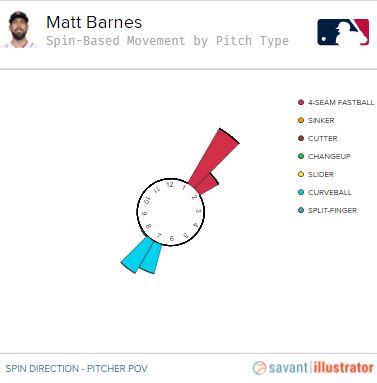Matt Barnes’ One Simple Trick
In 2018, Matt Barnes had a promising season for the Red Sox. He struck out 36.2% of the batters he faced en route to a 3.65 ERA and 2.71 FIP. His one weakness? He walked 11.7% of the batters he faced, a dangerous number. That pattern carried through to 2019; he struck out 38.6% of his opponents but walked 13.3% of them. That strikeout rate is wonderful, but the walks gave him little margin for error, as evidenced by 2020, when he struck out 30.4% of his opponents (still great) but walked 13.7% on his way to a below-replacement-level season.
In 2021, you’ll never believe it — Barnes is striking out the world again, with a 48.4% strikeout rate that’s fourth among relievers, behind only Aroldis Chapman, James Karinchak, and Josh Hader. Oh yeah — he’s also walking 4.8% of his opponents and has been quite possibly the most valuable reliever in the game. Let’s get an explanation for that, shall we?
At surface level, it’s easy! Take a look at swinging strike rate, a statistic that becomes reliable quickly:
| Year | SwStr% | K% |
|---|---|---|
| 2015 | 9.5% | 19.6% |
| 2016 | 10.8% | 24.7% |
| 2017 | 12.0% | 28.9% |
| 2018 | 14.5% | 36.2% |
| 2019 | 14.9% | 38.6% |
| 2020 | 11.3% | 30.4% |
| 2021 | 19.1% | 48.4% |
A 19.1% swinging strike rate is excellent; top-of-the-league excellent, really. Also true: Barnes hasn’t changed his pitch mix. He’s a two-pitch reliever, with a riding four-seamer and hammer curve. He throws them both roughly half the time, and they spin more or less exactly opposite out of his hand, which seems to help them both play up:

Great, problem solved. Hard curveball, decent fastball, they both play into each other’s deception, sounds like a good reliever to me. One small problem: there are maybe 50 relievers like that in baseball, and Barnes was also like that in the past, when he was far more walk-prone without his current killer strikeout numbers. Read the rest of this entry »
